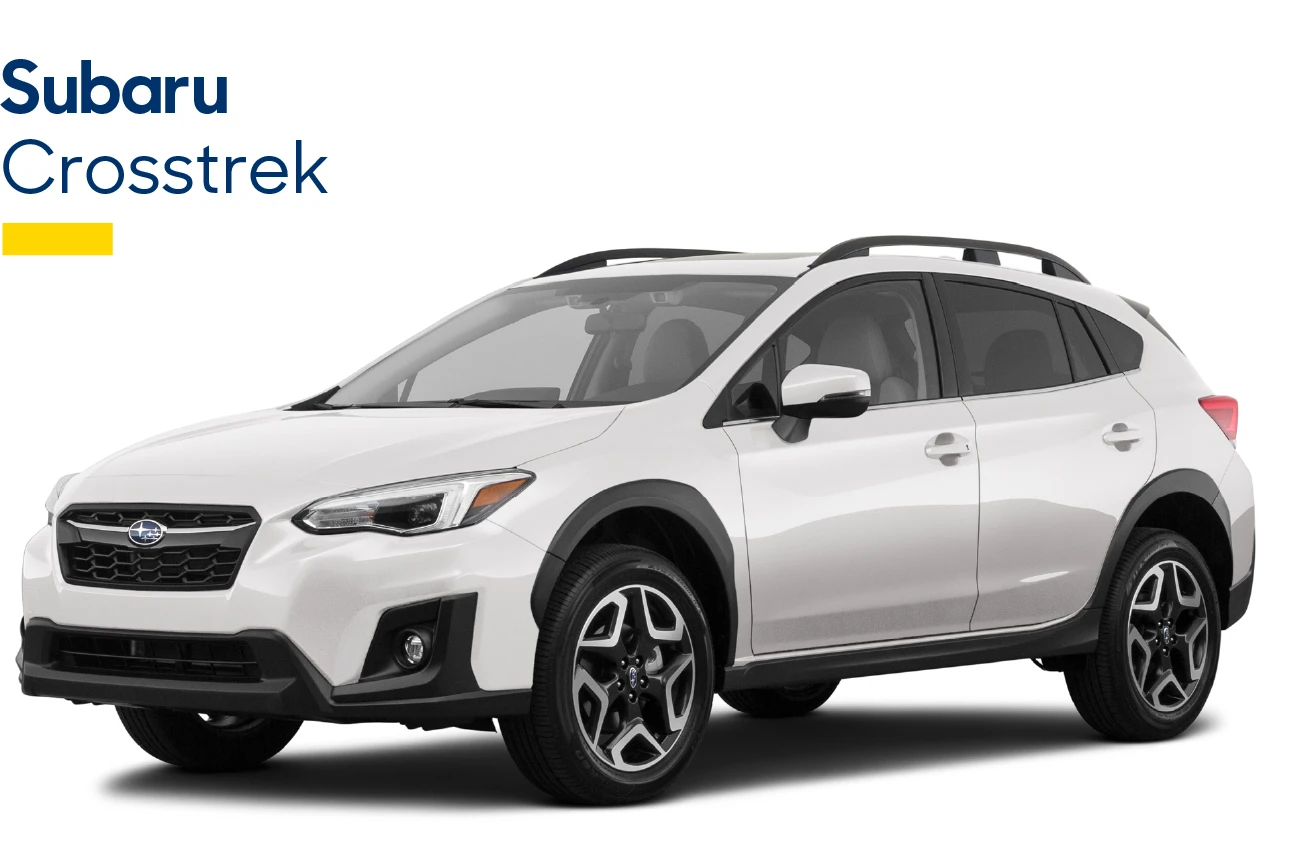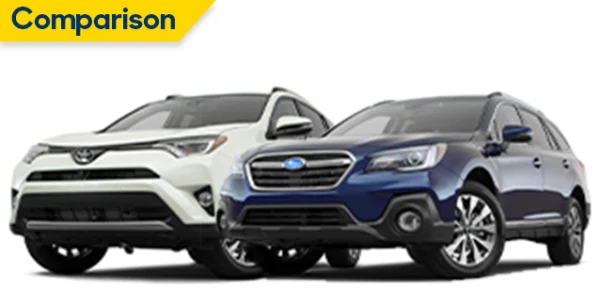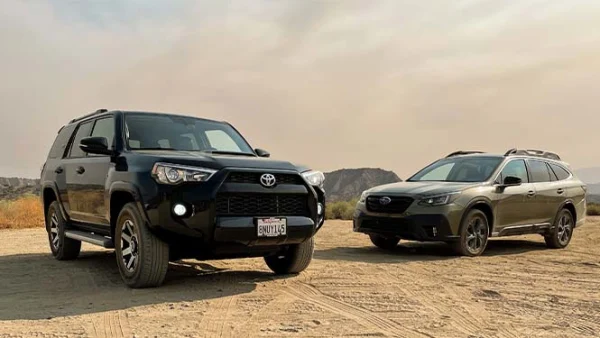Select your store
You can change your store in this dialog and have the carmax experience update accordingly.
2020 Subaru Outback review
Subaru Outback highlights
Customer rating
Pros
- Spacious and comfortable cabin
- Good off-road capability
- Available turbocharged engine
Cons
- Complicated touchscreen
- Bumpy ride on XT trims
- Intrusive cabin noise at highway speeds
Mileage (EPA estimate)
23 city, 30 highway, 26 combined
Pricing for current inventory
From $24,998 - $29,998*
Shop with your budget in mind
Get to where you're going with style and confidence.
Not quite a wagon, nor a crossover, the 2020 Subaru is classified as a midsize SUV, one that looks sleek like a car yet tough enough to handle almost anything on-road or off. The Subaru Outback is in a class of its own, thanks to distinct styling, a comfortable and well-equipped interior, and rugged capability, boasting all-wheel-drive and loads of driver-assistance technology. As a completely redesigned model, the 2020 version updates everything that makes the Outback fresh and versatile.
All Subaru Outback years
What is new for the 2020 Subaru Outback?
- The Outback is available in a variety of new trims, including the Base, Limited, Limited XT, Onyx Edition XT, Premium, Touring, and Touring XT.
- The 2.5I, 2.5I Limited, 2.5I Premium, 2.5I Touring, 3.6R Limited, and 3.6R Touring trims have been discontinued for 2020.
- Outback trims have been upgraded with A/C Seat(s), Leatherette Seats, and Turbo Charged Engine as standard equipment this year.
- Rockford Fosgate Sound features are now available as options on select trims.
2020 Subaru Outback trims
Base:
- 182-hp, 176-lb-ft of torque 2.5L
- Cruise Control
- Cloth Seats
- Rear View Camera
- Lane Departure Warning
- Power Mirrors
- Automated Cruise Control
- Rear Defroster
- Side Airbags
- View our Subaru Outback inventory
Premium:
- Includes all features available on the Base
- Front Seat Heaters
- Power Seats
- View our Subaru Outback Premium inventory
Limited:
- Includes all features available on the Premium
- Memory Seats
- Rear Seat Heaters
- Leather Seats
- Smart Key
- Blind Spot Monitor
- Power Hatch/Deck Lid
- Harman Kardon Sound
- View our Subaru Outback Limited inventory
Limited XT:
- Includes all features available on the Limited
- 260-hp, 277-lb-ft of torque 2.4L
- Sunroofs
- Leatherette Seats
- Heated Steering Wheel
- Turbo Charged Engine
- Navigation System
- View our Subaru Outback Limited XT inventory
Touring:
- Includes all features available on the Limited XT
- A/C Seats
- CD Audio
- View our Subaru Outback Touring inventory
Touring XT:
- Includes all features available on the Touring
- No significant upgrades found on the Touring XT
- View our Subaru Outback Touring XT inventory
Onyx Edition XT:
- Includes all features available on the Touring XT
- No significant upgrades found on the Onyx Edition XT
- View our Subaru Outback Onyx Edition XT inventory
Subaru Outback photos
1. Well-equipped off-roader
Off road, the 2020 Subaru Outback is trail-friendly and ready for adventure. Subaru's famed Symmetrical All-Wheel Drive and 8.7 inches of ground clearance make ruts and gravel roads a minor inconvenience. There's also the available X-Mode® system that includes hill-descent control and traction-control modes for difficult driving conditions. For families with an adventurous streak, the 2020 Subaru Outback will help you head out in new directions.
2. Strong base engine, and optional turbo engine
The Outback comes standard with a 2.5L four-cylinder engine that delivers 182 hp. That then gets mated to a CVT to help create a smooth and well-balanced driving experience. Those who crave more power can opt for the spirited 2.4L turbocharged four-cylinder engine that delivers 260 hp. That's plenty for passing-lane maneuvers. As far as powertrains go, the 2020 Subaru Outback offers a nice balance of power and performance.
3. All-Wheel drive on all trims
Almost all models of Subaru come standard with AWD. It's that simple, and it applies to every trim and variant of the 2020 Subaru Outback. And we're not talking about any ordinary all-wheel drive, either. Subaru vehicles are equipped with Symmetrical All-Wheel Drive, which is designed to keep the power routed to all four wheels as part of a balanced layout and solid connection with the road.
4. Comfort and space
From legroom to space for golf clubs or backpacks, the 2020 Subaru Outback has what you need. There are 32.5 cubic feet of cargo space behind the rear seats with over 70 cubic feet of cargo hauling space in total. Room for elbows, heads, and toes is also plentiful: The 2020 Subaru Outback offers 40.1 inches of headroom, 42.8 inches of legroom, and 58.1 inches of shoulder room. All that adds up to an accommodating and comfortable ride.
5. Smart and valuable standard technology
The 2020 Subaru Outback boasts a long list of standard technology. For example, all models get Subaru's Eyesight driver-assistance technology, which includes automatic emergency braking, forward-collision alert, adaptive cruise control, and more. Inside the cabin, standard technology includes Apple CarPlay® and Android Auto compatibility™, along with a seven-inch touchscreen and a rearview camera. The value of standard technology is yet another reason why the 2020 Subaru Outback is a serious contender in the SUV market.
2020 Subaru Outback video review
Travis Langness from Edmunds answers these very questions. Travis also explains everything you need to know before buying a used Outback. There are plenty of choices in the midsize SUV segment, and the Subaru Outback is a great option if you're looking for a comfortable and versatile vehicle that can cruise around the city and hit the trails on a camping adventure. Is a Subaru Outback the right choice for you and your lifestyle? Only one way to find out. This is our review of the Subaru Outback.
Similar vehicles
If you're interested in the 2020 Subaru Outback, you should also check out these similar vehicles from Previous generation years.

The go-anywhere attitude of the 2017-2020 Subaru Crosstrek starts with standard symmetrical all-wheel drive. The Subaru AWD system uses advanced torque vectoring to get power to the wheels with the most grip, helping you get places you didn't think were accessible. A 152-hp four-cylinder engine powers all three trims. There's 20.8 cubic feet of cargo space at the rear, and the 2017-2020 Subaru Crosstrek AWD with the 2.0L engine can tow an estimated 1,500 lbs., when properly equipped.
Various factors may impact towing capacity, including weight of passengers, cargo, and options/accessories.
Standard features on the 2017-2019 Subaru Crosstrek include:
6.5-inch touchscreen with smartphone app integration
Android Auto™ and Apple CarPlay® connectivity
Symmetrical AWD with multiple surface modes

The 2019 Subaru Ascent delivers comfort and plenty of power with a smooth ride and sporty handling. Cargo space is plentiful and it seats up to eight passengers; you can tell Subaru paid ample attention to the design and space of each row. With nearly 32 inches of legroom in the third row, the back does not feel like a squeeze. The 2019 Ascent in the Premium, Limited, and Touring trims (with a 2.4L four-cylinder engine) can tow up to 5,000 pounds when properly equipped.
Various factors may impact towing capacity, including weight of passengers, cargo, and options/accessories.

The Subaru Forester is a go-anywhere compact crossover with room for your whole crew. The 2017-2018 Forester has a standard 2.5L four-cylinder engine producing 170 hp or an available 250-hp 2.0L turbo-four. Starting in 2019, the Forester bumped base horsepower to 182 for the standard 2.5L but dropped the more powerful engine option. For 2017-2018, the Subaru Forester has 31.5 cubic feet of room behind the back seat, which increases to 33 cubic feet for 2019 and newer models.
Standard features on 2017-2021 Subaru Forester models include:
6.2-inch touchscreen (6.5-inch for 2019+)
Height-adjustable driver's seat
Apple CarPlay and Android Auto integration (2019+)
Shop with your budget in mind
Ratings & reliability
RepairPal gave the Subaru Outback an overall reliability rating of 4 out of 5 stars, which RepairPal describes as Above Average. This rating ranks Subaru Outback 10th out of 32 among Midsize SUVs.
View RepairPal's full rating of the Subaru OutbackSubaru Outback features and specs
Premium 4WD/AWD 4D Wagon
Standard Features
- 4WD/AWD
- ABS Brakes
- Air Conditioning
- Alloy Wheels
- AM/FM Stereo
- Android Auto
- Apple CarPlay
- Automated Cruise Control
- Automatic Transmission
- Auxiliary Audio Input
- Bluetooth Technology
- Cloth Seats
- Front Seat Heaters
- Full Roof Rack
- Lane Departure Warning
- Overhead Airbags
- Power Locks
- Power Mirrors
- Power Seat(s)
- Power Windows
- Rear Defroster
- Rear View Camera
- Satellite Radio Ready
- Side Airbags
- Traction Control
- Blind Spot Monitor
- CD Audio
- Navigation System
- Remote Start
- Rockford Fosgate Sound
- Smart Key
- Sunroof(s)
- Tow Hitch
Drive Wheels
All Wheel Drive (4WD/AWD)
Engine size
2.5L
Horsepower
182
Torque (ft-lbs)
176
Engine type
Gas
Fuel capacity
18.5
Wheelbase
108.1"
Overall length
191.3"
Width
73"
Height
66.4"
Leg room
F 42.8"/R 39.5"
Head room
F 40.1"/R 39.1"
Front tires
P225/65HR17
Rear tires
P225/65HR17
Seating capacity
5
Max towing capacity
270/2700 lbs.
Transmission
Automatic
2020 Subaru Outback FAQ
The standard engine in the Outback is a 2.5-liter four-cylinder that produces 182 horsepower and 176 lb-ft of torque. It's paired to a continuously variable automatic transmission (CVT) and comes standard with all-wheel drive. The EPA estimates that a 2020 Outback with the base 2.5-liter engine gets 29 mpg combined (26 highway/33 city).
On XT models, the Outback comes with a turbocharged 2.4-liter four-cylinder engine. It produces 260 horsepower and 277 lb-ft of torque. Just like the standard engine, it's connected to a CVT and all-wheel drive. The EPA's estimate for the turbo engine on the 2020 Outback is 26 mpg combined (23 highway/30 city).
The Outback with the base engine feels relatively underpowered and isn't as fun to drive. The extra power from the turbocharged engine makes merging onto the highway or passing a slow-moving truck a lot easier. But with either engine, steering and handling are impressive. The Outback is easy to maneuver in parking lots and stays stable around turns. Compared to some rival SUVs, the Outback feels more agile.
Ride comfort and seat comfort are two of the areas where the Outback excels. The seats are soft but supportive, and they'll easily keep you comfortable on long road trips or on daily commutes. On the highway and in the city, the Outback soaks up most road imperfections without transmitting them to the cabin. It's also relatively quiet on the highway, with little wind and road noise.
If you decide to take your Outback off-road, you'll probably be pleasantly surprised by its capabilities. Like all Subaru SUVs, the Outback has nearly 9 inches of ground clearance, which is enough to make it over most off-road obstacles like rocks or big ruts. In the dirt, the Subaru rides well too. You won't be able to tackle big rock-crawling obstacles like you could with something like a Jeep Wrangler, but you'll certainly be a lot more comfortable.
The Subaru Outback isn't as tall as some of its SUV rivals, and that results in slightly less maximum cargo capacity. Behind the second row of seats, the Outback offers 32.5 cubic feet of cargo space. The rival Honda Passport and Toyota 4Runner offer 41.2 cubes and 47.2 cubes, respectively. It's a similar deficit when you fold the rear seats down. You get 75.7 cubes in the Outback versus 77.9 cubes in the Passport (Sport trim) and 88.8 cubic feet in the 4Runner.
But in real-world use you're rarely packing things up to the headliner. For everyday cargo hauling, the Outback has a decent amount of space for luggage and small items. There are helpful door pockets and seatback pockets too, as well as a lot of center console space.
Another benefit of the Outback is the ease of loading items onto the roof. That lower roof height means it's easier to secure items such as a roof cargo box, bikes, or kayaks. The Outback also has trick integrated roof-rack cross rails. They're always on the car, so you don't ever have to store them and they deploy easily when it's time to use them.
The Outback has plenty of room for front and rear passengers. Headroom and legroom are abundant enough for adults in all the seating positions, and the tall side windows help make the cabin feel airy. Those same tall windows and the tall windshield mean excellent visibility too. Getting in and out of the Outback is a simple matter of sliding into the seat thanks to wide-opening doors and a seat height that isn't so high that you have to hop up into it.
When it comes to interior materials and build quality, the Outback doesn't feel particularly special. There are nice touchpoints for your hands and elbows and upper trim levels get leather upholstery, but most of the dashboard buttons and physical controls around the steering wheel are made out of plastic. Still, everything feels well put together.
There are two available screens for the Outback: the standard 7-inch screen and an upgraded 11.6-inch touchscreen. Only the base trim gets the 7-inch touchscreen, so most Outbacks you come across at CarMax will have the larger touchscreen. That bigger screen has sharp-looking graphics, but finding some of the controls in the on-screen menus can be distracting if you're driving. Climate control functions, for example, are controlled via a combination of physical buttons and touchscreen controls and can take some getting used to.
Voice controls are not particularly impressive either. Basic commands, such as selecting a radio station, work relatively well, but the Subaru doesn't take navigation inputs very well.
A bright side for the Outback is the impressive functionality of its driver aid systems. The adaptive cruise control system maintains a reasonable distance with traffic in front without overreacting to slowing vehicles, for instance, and the lane-keeping assist feature gently helps you stay centered in your lane. There are a lot of beeps and chirps to deal with, but the aids themselves work very well.
The standard 2.5-liter engine is adequate for daily use, but if you're looking to have a bit of fun in the Outback, the turbocharged 2.4-liter engine is the best choice. It's a closer match to the standard V6 options offered among rivals. An Outback with this engine will have XT in its name. From there, picking between the Onyx Edition XT, Limited XT, and Touring XT largely comes down to getting the features you want—each one offers progressively more convenience and luxury-like features.
More about the 2020 Subaru Outback
Color options
Exterior colors
Abyss Blue Pearl
Autumn Green Metallic
Cinnamon Brown Pearl
Crimson Red Pearl
Crystal Black Silica
Crystal White Pearl
Ice Silver Metallic
Magnetite Gray Metallic
Tungsten Metallic
Interior details
The 2020 Subaru Outback has 32.5 cubic feet behind the second row and 75.7 cubic feet with seats down.
The 2020 Subaru Outback seats up to five passengers.
Standard equipment includes a seven-inch infotainment touchscreen while an 11.6-inch touchscreen is available on the Premium trim.
Apple CarPlay and Android Auto connectivity is standard on all 2020 Subaru Outbacks.
All trim levels (except Base) feature standard heated front seats and a 10-way power front driver seat with lumbar support.
Research other vehicles
We hope you found this information helpful. This content is intended to inform and is not meant to indicate that a particular vehicle is currently available or recommended for you.
Statements of fuel economy or EV range are based on EPA and other third-party estimates for vehicles when new. Fuel economy and EV range will degrade with time and vary based on age, driving conditions, vehicle history, and other conditions. See fueleconomy.gov for more info.
Unless otherwise noted, information related to featured vehicles comes from third-party sources, including manufacturer information. Product and company names may be trademarks or registered trademarks of third-party entities. Use of them does not imply any affiliation with or endorsement by these entities. By clicking on any video links, you will be taken to a third-party site maintained by YouTube, Inc.
We make every effort to provide accurate information, but please verify before purchasing.
























